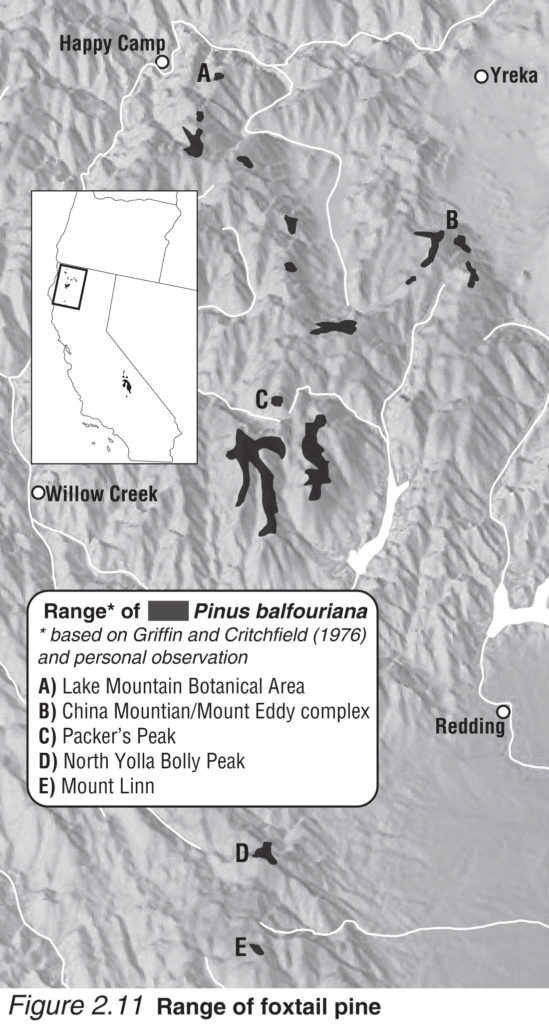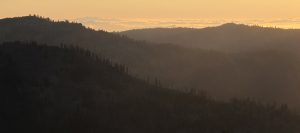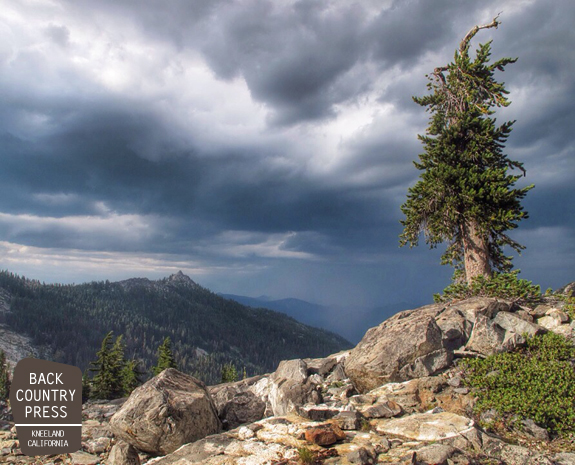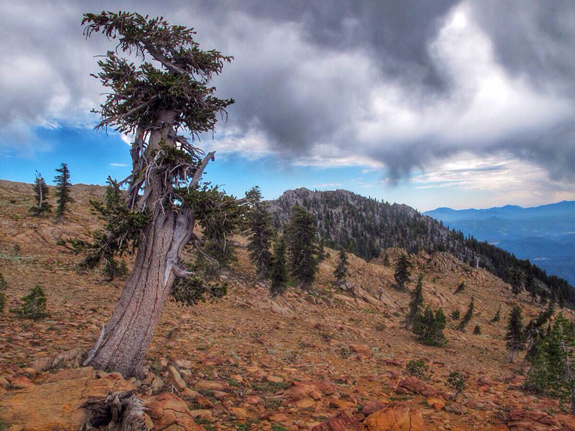Pinus balfouriana ssp. balfouriana
“Whether old or young, sheltered or exposed to the wildest of gales, this tree is ever found irrepressibly and extravagantly picturesque and offers a richer and more varied series of forms to the artist than any other conifer I know of.”
−John Muir
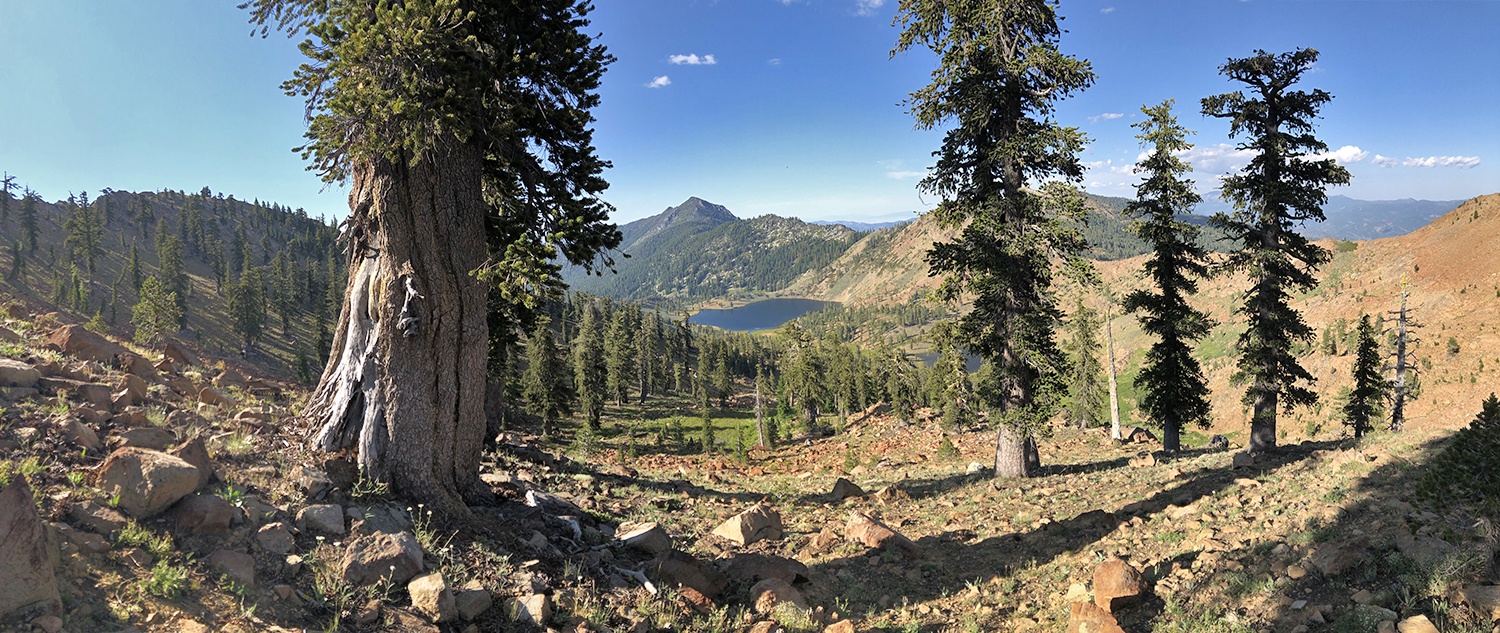
The following excerpt is from my book Conifer Country. I was inspired to publish it here after a recent trip with my son to visit and measure the Klamath Mountain champion foxtail pine. After this trip, the foxtail pine is his favorite tree species too 🙂
California’s endemic foxtail pines have established two esoteric populations abscinded by nearly 500 miles of rolling mountains and deep valleys. The species was first described by John Jeffrey near Mount Shasta in 1852 , which was most likely a population near Mount Eddy or in the Scott Mountains. Later, this species was discovered in the high elevations (9,000’-12,000’) of the southern Sierra Nevada. The ecological context of Klamath foxtail pines in the Klamath Mountains differs drastically from that in the Sierra Nevada due to the divergence of these populations in the mid-Pleistocene. Though separated over one million years ago, both subspecies exhibit a radiance and individuality for which I honor them as my favorite conifer.
With separation in space and time, divergence—including cone orientation, seed character, crown form, foliage, and even chemistry—has occurred between the two subspecies. Another reason for these variations are genetic bottlenecks that have been promulgated by spatially restricted microsite adaptations, particularly in the Klamath Mountains . Northern foxtail pines (var. balfouriana) are isolated on sky islands—local mountain tops and ridgelines—from 6,500’ to 9,000’ in the eastern half of the Klamath Mountains. By my count there are 16 isolated sub-populations each consisting of one to several isolated mountain-top populations, except in the Trinity Alps where they are locally common in the more contiguous high elevations. On these sites, proper geologic, topographic, and climatic conditions have offered synergistic alliances with shade-tolerant and faster-growing firs and hemlocks.
Continue reading “Klamath Foxtail Pine”